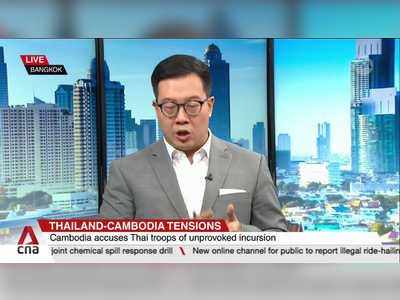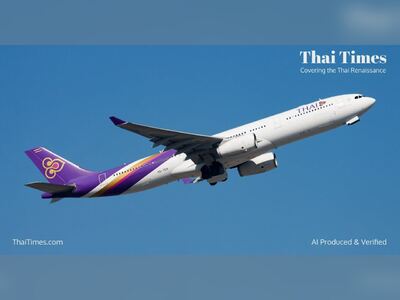Thailand's Rail Ambitions: A Double-Edged Track Towards China's Influence
Connecting Isaan to China's Railways: An Economic Boon or a Sovereignty Challenge?
Thailand's strategic maneuver to connect its railways with China represents a bold vision for regional integration and development.
Spearheaded by Transport Minister Suriya, this ambitious initiative seeks to transform the Isaan region—a historically isolated and underdeveloped part of Thailand—into a bustling hub of trade and connectivity.
But as with any major geopolitical move, this development elicits a spectrum of reactions.
From one perspective, the rail link holds the potential to unlock significant economic opportunities.
The Isaan region stands to benefit from improved trade routes, facilitating the smoother movement of goods and people.
Such connectivity could catalyze economic growth, providing an impetus to uplift millions in the region by integrating them into the broader dynamics of regional commerce.
In this sense, Thailand appears to be playing a savvy hand, leveraging China's economic clout to infuse growth into its own local economy.
However, the strategic calculus is fraught with complexity.
Closer economic ties with China raise pertinent questions about sovereignty and the potential for undue influence.
The Chinese Belt and Road Initiative (BRI) serves as a cautionary tale of how infrastructure investments can entangle nations in intricate webs of debt and dependency, leading some to question whether this rail connectivity could endow China with disproportionate sway over Thailand's policy-making and economic strategies.
Minister Suriya has sought to alleviate these concerns by emphasizing the principle of sustainable development as central to the rail project.
Beyond mere connectivity, there's a vision to cultivate green spaces and burgeoning tourist cities, aiming for a balanced augmentation of the Thai economy.
Yet, it remains crucial to scrutinize whether such promises translate into tangible benefits that encompass all strata of society, especially the local communities in Isaan who are positioned at the heart of this transformation.
Despite the potential pitfalls, infrastructure developments historically have been pivotal engines of economic transformation, akin to the advances of the Industrial Revolution.
Therein lies the possibility for Isaan to emerge from obscurity, not only improving logistics but also enhancing quality of life for its inhabitants.
Nevertheless, history also serves as a cautionary lens, highlighting how economic revolutions can exacerbate inequalities.
As Thailand embarks on this transformative journey, the imperative is to ensure that strategic foresight today precludes the missteps of the past.
Ultimately, the Thai-China railway connection is both a promise and a peril—illustrative of the delicate balance between leveraging external economic partnerships and preserving national autonomy.
In this chess game of regional development and geopolitics, Thailand must navigate its future with prudence.
As the axiom goes, 'The best way to predict the future is to create it.' The hope is that Thailand crafts a future reflecting equitable growth for all its citizens, steering clear of the geopolitical snares that have proven challenging for other nations entangled with China's expansive economic initiatives.
Spearheaded by Transport Minister Suriya, this ambitious initiative seeks to transform the Isaan region—a historically isolated and underdeveloped part of Thailand—into a bustling hub of trade and connectivity.
But as with any major geopolitical move, this development elicits a spectrum of reactions.
From one perspective, the rail link holds the potential to unlock significant economic opportunities.
The Isaan region stands to benefit from improved trade routes, facilitating the smoother movement of goods and people.
Such connectivity could catalyze economic growth, providing an impetus to uplift millions in the region by integrating them into the broader dynamics of regional commerce.
In this sense, Thailand appears to be playing a savvy hand, leveraging China's economic clout to infuse growth into its own local economy.
However, the strategic calculus is fraught with complexity.
Closer economic ties with China raise pertinent questions about sovereignty and the potential for undue influence.
The Chinese Belt and Road Initiative (BRI) serves as a cautionary tale of how infrastructure investments can entangle nations in intricate webs of debt and dependency, leading some to question whether this rail connectivity could endow China with disproportionate sway over Thailand's policy-making and economic strategies.
Minister Suriya has sought to alleviate these concerns by emphasizing the principle of sustainable development as central to the rail project.
Beyond mere connectivity, there's a vision to cultivate green spaces and burgeoning tourist cities, aiming for a balanced augmentation of the Thai economy.
Yet, it remains crucial to scrutinize whether such promises translate into tangible benefits that encompass all strata of society, especially the local communities in Isaan who are positioned at the heart of this transformation.
Despite the potential pitfalls, infrastructure developments historically have been pivotal engines of economic transformation, akin to the advances of the Industrial Revolution.
Therein lies the possibility for Isaan to emerge from obscurity, not only improving logistics but also enhancing quality of life for its inhabitants.
Nevertheless, history also serves as a cautionary lens, highlighting how economic revolutions can exacerbate inequalities.
As Thailand embarks on this transformative journey, the imperative is to ensure that strategic foresight today precludes the missteps of the past.
Ultimately, the Thai-China railway connection is both a promise and a peril—illustrative of the delicate balance between leveraging external economic partnerships and preserving national autonomy.
In this chess game of regional development and geopolitics, Thailand must navigate its future with prudence.
As the axiom goes, 'The best way to predict the future is to create it.' The hope is that Thailand crafts a future reflecting equitable growth for all its citizens, steering clear of the geopolitical snares that have proven challenging for other nations entangled with China's expansive economic initiatives.











